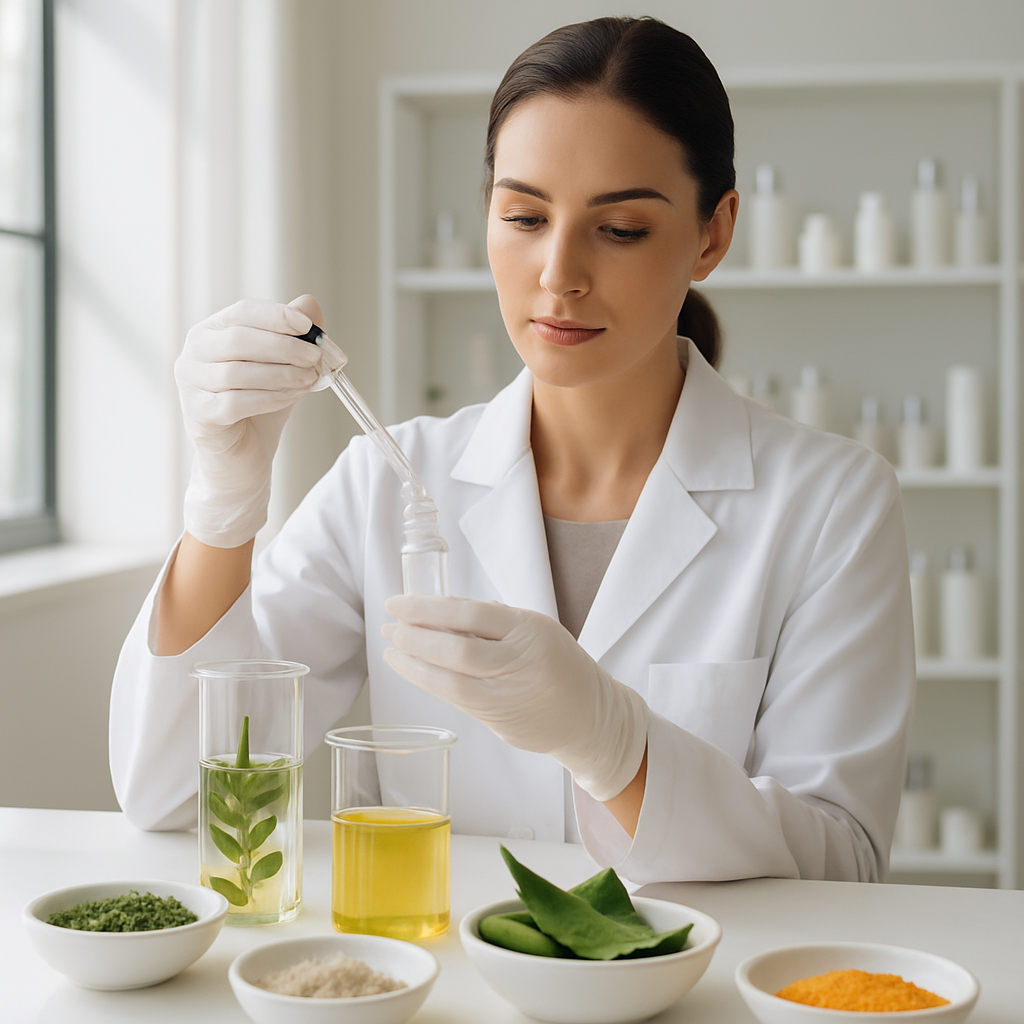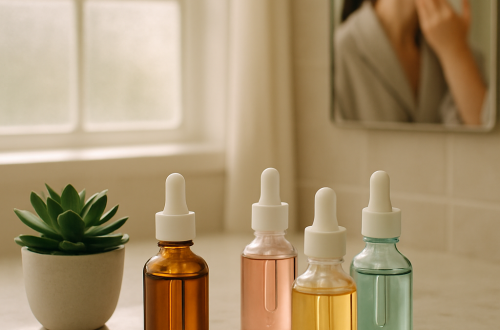The Science Behind Skincare Ingredients That Actually Work

The beauty industry bombards us with promises of perfect skin through “miracle” ingredients that claim to erase wrinkles, banish acne, and restore youthful glow. But behind the marketing hype and pretty packaging, what ingredients actually deliver results? Let’s explore the science-backed skincare heroes that dermatologists and researchers agree make a meaningful difference.
Walking through skincare aisles can feel overwhelming. Products boast exotic extracts and patented compounds with impressive-sounding names. Yet many popular ingredients lack substantial evidence supporting their effectiveness. Understanding which ingredients have solid research behind them helps cut through the noise and build a skincare routine that works.
The Proven Powerhouses
Retinoids stand as perhaps the most studied and validated skincare ingredients available. Derived from vitamin A, these compounds work by accelerating cell turnover and stimulating collagen production. Dr. Leslie Baumann, dermatologist and author of “The Skin Type Solution,” explains, “Retinoids are the gold standard for anti-aging. They’re one of the few ingredients with decades of research proving they reduce fine lines, improve skin texture, and even help with acne.”
Prescription-strength retinoids like tretinoin (Retin-A) show the most dramatic results, but over-the-counter retinol products can be effective too, albeit more gradually. A 2019 study in the Journal of Cosmetic Dermatology found that even a 0.3% retinol formulation significantly improved fine wrinkles after 12 weeks of use.
The trick with retinoids? Patience and proper introduction. Many people give up because of initial irritation, redness, and flaking. “Start with applying retinol once or twice weekly, then gradually increase frequency,” suggests Dr. Shereene Idriss, a New York-based dermatologist. “And always use sunscreen during the day, as retinoids can increase sun sensitivity.”
Vitamin C (ascorbic acid) ranks as another ingredient with substantial scientific backing. This antioxidant protects against UV damage, brightens skin tone, and boosts collagen synthesis. Research published in the Journal of Clinical and Aesthetic Dermatology demonstrates that vitamin C can reduce hyperpigmentation and improve skin’s overall appearance.
However, vitamin C presents formulation challenges. It’s notoriously unstable, breaking down when exposed to light and air. “Look for vitamin C products in opaque, airless packaging,” recommends cosmetic chemist Perry Romanowski. “And pay attention to the form of vitamin C. L-ascorbic acid is the most potent but least stable form, while derivatives like magnesium ascorbyl phosphate are more stable but may be less effective.”
I learned this lesson the hard way after spending $80 on a vitamin C serum that oxidized (turned orange-brown) within a month because I left it on my sunny bathroom counter. Now I store mine in the refrigerator and make sure to tightly close the dropper after each use.
Niacinamide (vitamin B3) has gained popularity for good reason. This versatile ingredient strengthens the skin barrier, reduces inflammation, regulates oil production, and improves uneven skin tone. A study published in the International Journal of Dermatology found that 4% niacinamide significantly reduced hyperpigmentation and increased skin elasticity after 12 weeks.
“What makes niacinamide special is how well-tolerated it is by most skin types,” says Dr. Whitney Bowe, dermatologist and author. “Even sensitive skin usually responds well to it, and it plays nicely with other active ingredients.”
Alpha and beta hydroxy acids (AHAs and BHAs) work by exfoliating the skin surface, removing dead cells to reveal fresher skin underneath. Glycolic acid, the smallest AHA molecule, penetrates skin most effectively, while salicylic acid (a BHA) dissolves oil and works well for acne-prone skin.
Research published in Dermatologic Surgery shows glycolic acid treatments can improve skin texture, reduce fine lines, and help with pigmentation issues. Meanwhile, numerous studies confirm salicylic acid’s effectiveness against acne.
My friend Sarah swears by her twice-weekly glycolic acid treatment. After struggling with persistent dullness and clogged pores despite regular cleansing, she incorporated a 10% glycolic acid solution into her routine. Within a month, her complexion looked brighter and clearer. “It felt like someone turned the lights on for my face,” she told me.
Peptides represent another category with growing scientific support. These amino acid chains signal skin cells to perform specific functions, like producing more collagen. While not as thoroughly studied as retinoids, certain peptides show promising results.
“Peptides are like little messengers that tell your skin to act younger,” explains Dr. Loretta Ciraldo, a Miami-based dermatologist with over 40 years of experience. “Different peptides have different functions some boost collagen, others relax facial muscles similar to Botox, though more subtly.”
A randomized controlled trial published in the International Journal of Cosmetic Science found that a specific peptide complex improved the appearance of eye wrinkles compared to placebo. However, not all peptides are created equal, and the research varies significantly depending on the specific compound.
Beyond the Basics
Hyaluronic acid has become ubiquitous in hydrating products, and for good reason. This molecule can hold up to 1,000 times its weight in water, helping to plump and hydrate the skin. Studies confirm its effectiveness at increasing skin moisture content and improving elasticity.
“Hyaluronic acid works immediately, which is part of its appeal,” notes Dr. Ranella Hirsch, a Boston-based dermatologist. “You apply it to damp skin, and you’ll feel the hydration right away. But it’s a temporary effect that requires consistent use.”
Contrary to what many believe, different molecular weights of hyaluronic acid serve different purposes. Lower molecular weight versions penetrate deeper but may potentially trigger inflammation, while higher molecular weights sit on the surface, providing immediate hydration.
Ceramides, natural lipids that help form the skin barrier, have solid science supporting their use, especially for dry or sensitive skin. Research published in the Journal of the American Academy of Dermatology shows that ceramide-containing moisturizers effectively repair the skin barrier and reduce dryness.
“Think of ceramides as the mortar between skin cell ‘bricks,'” explains Dr. Heather Rogers, dermatologist and founder of Doctor Rogers RESTORE. “They’re crucial for keeping moisture in and irritants out. As we age, ceramide levels naturally decline, which contributes to dryness and sensitivity.”
Azelaic acid deserves more attention than it typically receives. This naturally occurring acid has antibacterial, anti-inflammatory, and skin-brightening properties. Clinical studies demonstrate its effectiveness against acne, rosacea, and hyperpigmentation.
“Azelaic acid is one of the most versatile yet underrated ingredients,” says Dr. Sam Ellis, a dermatologist specializing in pigmentation disorders. “It fights multiple skin concerns simultaneously without causing significant irritation.”
I started using azelaic acid after developing mild rosacea in my thirties. Within weeks, the persistent redness on my cheeks had noticeably diminished, and occasional breakouts became less inflamed and healed faster.
Growth factors represent the frontier of skincare science. These naturally occurring proteins regulate cell growth and proliferation. While more research is needed, preliminary studies suggest certain growth factors may improve signs of skin aging.
“The research on growth factors is still evolving,” cautions Dr. Doris Day, clinical associate professor of dermatology at NYU Langone. “The challenge lies in formulating products where these delicate proteins remain stable and can actually penetrate the skin barrier.”
The Formulation Factor
Understanding effective ingredients is just part of the equation. How these ingredients are formulated significantly impacts their performance.
“Concentration matters tremendously,” explains cosmetic chemist Jen Novakovich. “A product might list retinol, but if it’s the last ingredient, the concentration is likely too low to provide benefits.”
Stability represents another crucial factor. Some ingredients degrade quickly when exposed to light and air. “That’s why packaging isn’t just about aesthetics,” notes Romanowski. “Airless pumps and opaque containers help preserve ingredient efficacy.”
The vehicle whether cream, serum, or lotion affects ingredient delivery. “Oil-soluble ingredients like retinol work better in oil-based formulations, while water-soluble ingredients like vitamin C need water-based vehicles,” explains Dr. Joshua Zeichner, Director of Cosmetic and Clinical Research in Dermatology at Mount Sinai Hospital.
pH level also determines effectiveness. Acids like glycolic and vitamin C require specific pH ranges to work properly. This explains why some products that contain the right ingredients still don’t deliver results they might be formulated at the wrong pH.
Considering these factors helps explain why two products containing the same star ingredient can yield dramatically different results. The science extends beyond just what’s in the bottle to how it’s formulated.
The skincare landscape continues to evolve as research advances. While marketing claims may come and go, ingredients with solid scientific backing remain the foundation of effective skincare. By focusing on these proven performers retinoids, vitamin C, niacinamide, hydroxy acids, peptides, hyaluronic acid, ceramides, and azelaic acid you can build a routine that delivers measurable results.
Remember that consistency trumps complexity. A simple routine using scientifically-backed ingredients, applied regularly, typically outperforms complicated regimens used sporadically. And what works for one person might not work for another due to differences in skin type, concerns, and even genetics.
The most powerful approach combines evidence-based ingredients with personalized application and perhaps most importantly, reasonable expectations. Even the most effective skincare ingredients can’t completely reverse aging or transform skin overnight. They can, however, meaningfully improve skin health and appearance when used correctly and consistently.


